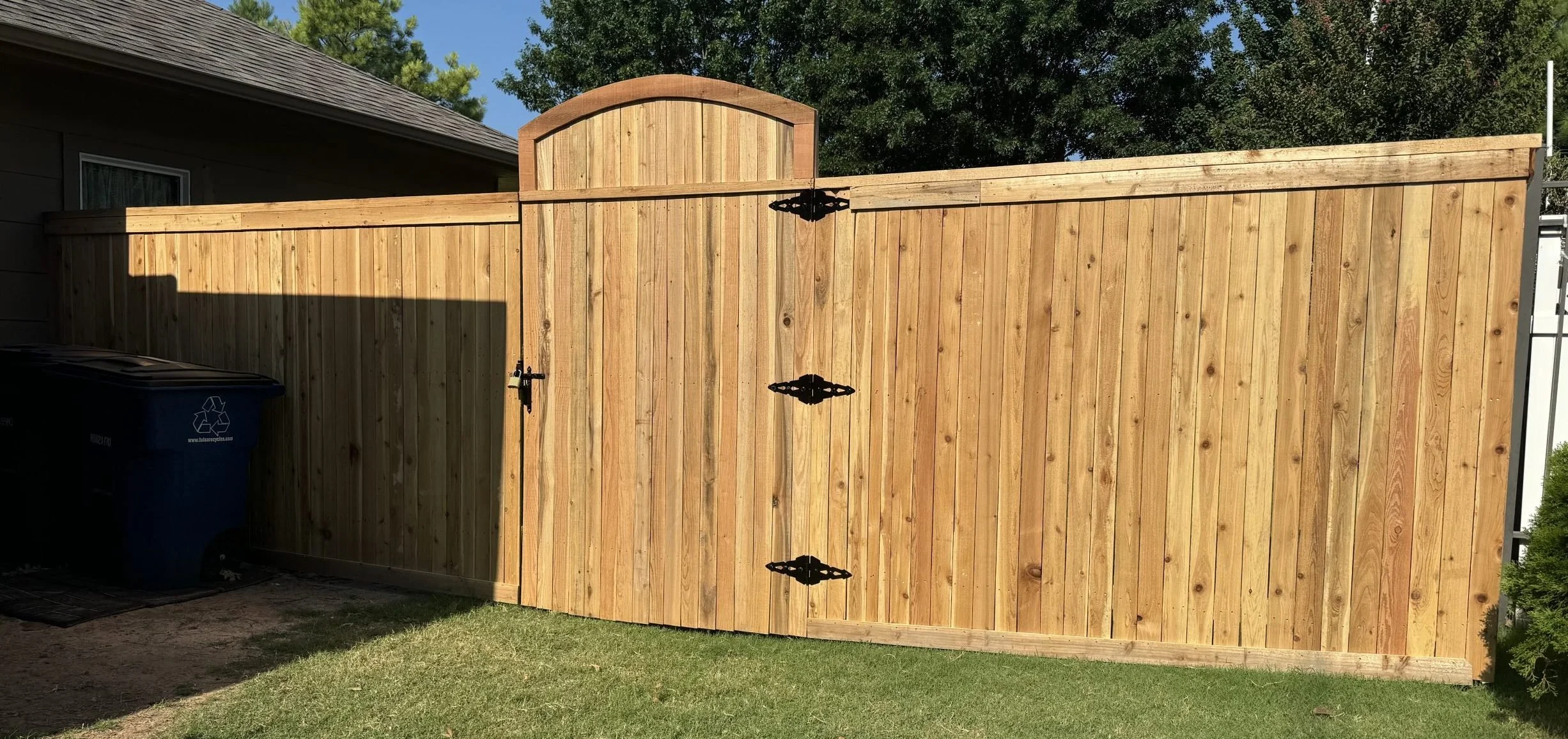Preparing to Build Your Wood Fence: Steps Before You Start
Building your own wood fence is an exciting project that can enhance your property's privacy, security, and aesthetic appeal. While you may already have the skills to construct the fence, proper preparation is key to ensuring a smooth and successful installation. One crucial aspect often overlooked is the need to identify and mark underground utilities to prevent hazardous and costly mistakes. In this guide, we'll focus on the essential steps you need to take before digging, including how to use Okie811 to locate utilities.
Why Utility Marking Is Crucial
Before you start digging post holes, it's vital to know what's beneath the ground. Hitting underground utility lines can lead to service disruptions, expensive repairs, legal liabilities, and even serious injuries. Utilities such as gas lines, electrical cables, water pipes, and communication lines are commonly buried in residential areas.Key Reasons to Mark Utilities:
- Safety: Prevent accidents that could harm you or others.
- Legal Compliance: Avoid fines and legal issues by adhering to local regulations.
- Cost Savings: Prevent costly repairs to damaged utilities.
- Service Continuity: Avoid disrupting essential services to your home and neighborhood.
Contacting Okie811 for Utility Marking
In Oklahoma, homeowners and contractors can use Okie811 to request free utility marking services. It's a simple process that can save you from potential hazards.
How to Request a Utility Marking:
- Visit the Website or Call: Go to www.okie811.org or dial 811 to submit a request.
- Provide Project Details: Include your address, contact information, and a description of where you plan to dig.
- Wait for Confirmation: Okie811 will coordinate with local utility companies to schedule the marking.
- Allow Processing Time: It typically takes about three business days for all utilities to be marked.
What to Expect:
- Utility Representatives: Professionals will visit your property to mark underground lines.
- Color-Coded Markings: They'll use flags or paint to indicate different types of utilities. These markings are valid for 14 calendar days, so plan your project accordingly.
Understanding the Utility Color Codes
Knowing what each color represents can help you plan your digging and avoid specific utility lines. Here's a breakdown of the utility marker colors and their meanings:
- White: Proposed Excavation—areas where you plan to dig.
- Pink: Temporary Survey Markings—used by surveyors to mark legal property boundaries.
- Red: Electric Power Lines, Cables, Conduit, and Lightning Cables—high voltage lines that pose significant risk.
- Yellow: Gas, Oil, and Steam Lines—damage can lead to leaks or explosions.
- Orange: Communication Lines, Alarm or Signal Lines, and Conduit—includes telephone and internet cables.
- Blue: Potable Water Lines—damage can disrupt water supply and cause flooding.
- Purple: Reclaimed Water, Irrigation, and Slurry Lines—used for non-potable water applications.
- Green: Sewer and Drain Lines—damage can lead to sanitation issues.
Other Essential Preparation Steps
1. Verify Property Boundaries
- Review Property Documents: Check your deed or survey to confirm boundary lines.
- Discuss with Neighbors: If the fence is near a neighbor's property, communicate your plans to avoid disputes.
2. Check Local Regulations
- Permits: Determine if your city or county requires a building permit for fence construction.
- Zoning Laws: Understand height restrictions and setback requirements.
- HOA Guidelines: Review any homeowners association rules that may affect your fence design.
3. Plan Your Fence Layout
- Design Considerations:
- Purpose: Privacy, security, aesthetics, or a combination.
- Materials: Choose the type of wood best suited for Tulsa's climate (e.g., cedar for its rot resistance).
- Style: Decide on the fence style that complements your property.
- Mark the Layout:
- Use stakes and string to outline the fence line.
- Indicate gate locations and any changes in direction.
4. Prepare the Site
- Clear the Area: Remove vegetation, rocks, and debris along the fence line.
- Level the Ground: While minor slopes can be managed during installation, significant unevenness may require grading.
- Identify Soil Conditions: Understanding your soil type can help determine the best method for setting posts.
Tips for a Smooth Fence Installation
Respect the Utility Marks
- Maintain Clearance: Keep a safe distance from the marked lines. Oklahoma law requires you to hand-dig within 24 inches on either side of the utility marks.
- Proceed with Caution: Even with markings, always be alert for unexpected lines or obstacles.
Schedule Your Project Wisely
- Plan Ahead: Since utility marking takes about three business days, submit your request well before your intended start date.
- Work Within the 14-Day Window: Remember that the utility markings are valid for 14 days. If your project is delayed beyond that, you'll need to request a re-marking.
- Weather Considerations: Check the forecast to avoid working in adverse conditions that could hinder progress.
Gather Necessary Tools and Materials
- Tools: Ensure you have all the tools required for the job, such as post-hole diggers, levels, hammers, and saws.
- Materials: Purchase all necessary materials, including lumber, nails or screws, concrete, and protective finishes.
Final Thoughts
Proper preparation is the foundation of any successful fence installation. By taking the time to plan your project thoroughly, verify property boundaries, check local regulations, and especially mark underground utilities through Okie811, you're setting yourself up for a smooth and safe building process.At Hollar Fence, we believe in empowering homeowners with the knowledge they need to undertake their projects confidently. If you have questions or decide you'd prefer professional assistance, we're here to help. Our commitment to quality workmanship and customer satisfaction ensures your fence will stand strong for years to come.Ready to start your fencing project or need expert advice? Contact Hollar Fence today, and let's build something great together.

